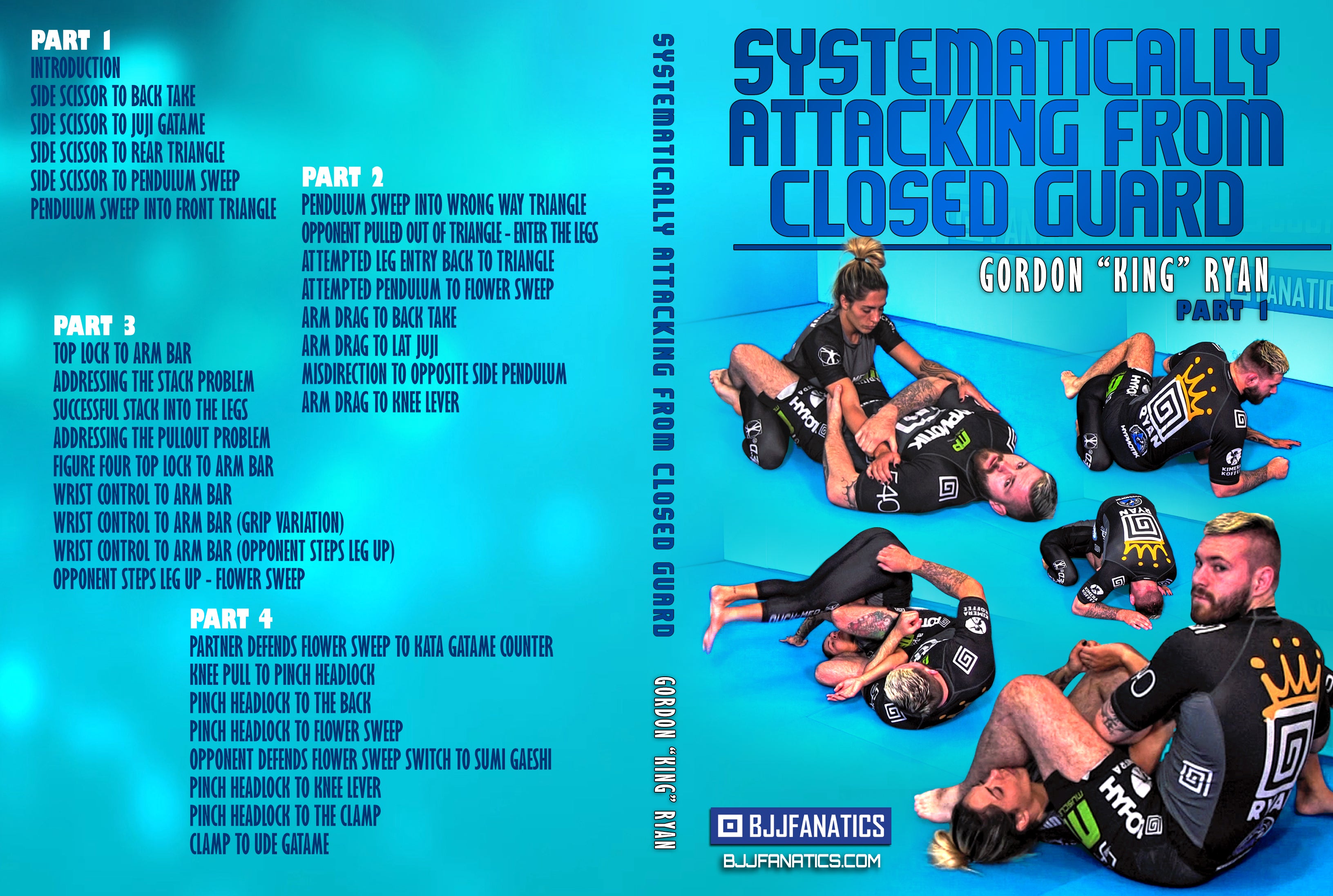Understanding Closed Guard with Gordon Ryan
Posted by Fanatics Authors on
First we have to say a huge congratulations to Gordon Ryan on his incredible Double Gold performance at ADCC 2019!
Learn More. Win more!
Today we will look at closed guard in no gi with Gordon Ryan. Typically closed guard is more known for gi jiu-jitsu as there are more gripping options. Gordon is about to drop some wisdom on applying the highly effective closed guard position in the no gi game.
The first thing Gordon emphasizes is that most of a match will be spent in neutral positions. Being in closed guard is a neutral position.
The task that Gordon sets from here is to go from a neutral position to having a micro advantage. This is the first step to setting up bigger advantages.
Three such micro adjustments could be taking our opponents elbow past our own belly button, or taking their elbow to the other side of our body, or taking their elbow above our opposite shoulder. These micro adjustments lay a strong groundwork for further attacking positions.
Master The Closed Guard with the ADCC 2019 DOUBLE CHAMP!
A sweep hasn’t yet occurred, we haven’t changed position, and we’re not scoring points, but we’re making incremental and steady progress towards our goal in a systematic fashion.
Gordon identifies two elements and one core strategy to achieve these off-balancing micro-adjustments, which are;
- Movement, that leads to
- Angular advantage, achieved by
- The strategy of mis-direction
For example, Gordon creates movement by shifting Bernardo’s elbow across his body. This is to seek the angular advantage of controlling the center line, however Bernardo resists this by posting against the original direction of movement. Gordon then counters this with misdirection in order to then off-balance the posting arm and gain angular advantage on the opposite side to the initial micro-adjustment.
Gordon has still not scored any points by this stage, but is clearly in an advantaged position that opens the option of building further attacks, while retaining the security of control that closed guard offers.
We now move into a heuristic for what to do with our opponents arms when we are in bottom closed guard.
If his opponents elbows are inside his hips Gordon will seek to move them across his body. If his opponents elbows are outside his hips Gordon will seek to take them further away for limb extension, leaving his opponents arms vulnerable to attack.
A second heuristic is understanding our opponents spine as a lever that we are seeking to exert influence upon.
As with all levers they have a fulcrum, which when we are close to reduce our ability to exert force and when we are far from increase our ability to exert force. The fulcrum in this case is our opponents hips, and the end of the lever is our opponents head.
Understanding this gives us an understanding of how to break our opponents posture, which means we break our opponents power.
In the no gi context using collar tie grips around the back of our opponents neck or working the legs incrementally up our opponents body towards their head gives us the control we need over their posture.
In order to break the closed guard our opponent will be seeking to stand up. By using these heuristics of off-balancing, angular advantage, misdirection, and controlling the long end of the lever of our opponents spine (their head), we drastically impact or nullify their ability to stand.
If we look at the high levels of competition it is rare people will stay on the floor and try to break closed guard because in doing so we leave ourselves vulnerable to greater positional control by our opponent.
For this reason most high level closed guard breaks will occur by standing up. If we can control our opponents posture in the ways Gordon has outlined then even if our opponent does manage to stand up we can still control their posture via head control. If this fails then Gordon being the leg taking beast that he is, can pressure his opponent further with lower limb attacks.
Understanding these heuristic concepts of micro-adjustments, off-balancing, misdirection, and posture control can change the closed guard position from one often used to stall into both a highly controlling and offensive position that will cause your opponents real headaches.
Gordon has just won double Gold at ADCC so it’s clear the concepts he is breaking down and articulating here in great detail will take your game to the next level.
Like we like to say; Know More. Win More.

Gordon Ryan has already changed the course of Jiu-Jitsu with his Guard Passing Instructional now he is set to do the same with the Closed Guard! Systemizing Closed Guard will provide the road map to success when in Closed Guard. Update your classic Closed Guard technique with a modern HIGH PERCENTAGE approach to attacking from Closed Guard!
ARE YOU A BJJ FANATICS INSIDER? IF NOT, YOU’RE MISSING OUT!
Take a deep dive on one specific skill per month with the top instructors in the BJJ Fanatics family.
With your subscription you'll get:
- Private Lesson (Masterclass)
- Preview of our Upcoming Daily Deals to better plan your purchases
- Rolling breakdowns & more.
You'll also get At Home Drills to work on, a Preview of our Upcoming Launches & More!
FREE FOR 7 DAYS TRIAL

